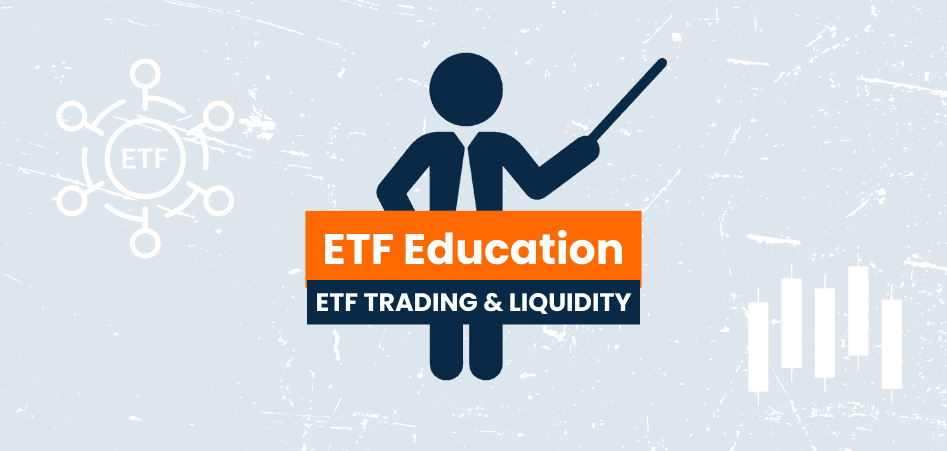ETF Trading & Liquidity

Trading Ins and Outs
Unlike mutual funds, ETFs trade like stocks – an ETF can be bought and sold throughout the trading day and its price moves with the underlying instruments that the ETF tracks. As a result, its on-screen market price trades around its underlying instruments’ prices, though this variability can lead to a closing price difference from its NAV. That said, ETFs are structured to minimize these differences, and in practice, they are typically modest for most ETFs. In addition, you can buy and sell ETFs through a brokerage account throughout the trading day, offering more flexibility than mutual funds.
Using a custodian or dedicated trading desk helps to ensure the best execution on your active ETF trades, given their connectedness to major market makers and the access they afford to improved pricing. Importantly, these resources are equipped not only to save you money on your trade via execution costs, but also to avoid slippage. In addition, working with trading specialists can help prevent trading around news or report releases that you may not be aware of that are causing volatility in the market.
If you do decide to trade on your own, we believe investors should adhere to certain best practices to fully benefit from the trading flexibility offered by ETFs, such as:
 | Consider using “limit” orders instead of “market” orders.Limit orders allow the investor to buy a security at no more (or to sell it at no less) than the price specified in the order. In this way, limit orders provide more control of price execution than a market order. |
 | Seek to avoid trading at either the market open or close.Prices can be volatile and bid/ask spreads can be at their widest at or near the market opening or close. Therefore, it is often preferable to avoid trading ETFs during these times. |
 | For larger orders, consider reaching out to your brokerage firm, capital markets team, or the ETF issuer for guidance.ETF issuers and brokerage firms have relationships with liquidity providers who can help facilitate larger trades and provide additional sources of liquidity. Leveraging the creation/redemption mechanism of the ETF is an option for facilitating larger trades. |
Improving Your Understanding of Liquidity
In the investing world, liquidity reflects the ease with which shares can be bought and sold without affecting its price. However, ETF liquidity is not just what you see on screen in the average daily trading volume or the culmination of stock exchanges putting out bids and offers. Instead, we point to implied liquidity as a more accurate representation of a product’s fluidity.
Implied liquidity measures liquidity in terms of the least liquid underlying position held within an ETF wrapper and how much can be traded in that name.
In restricting yourself to ETFs that are deemed as on-screen liquid, we estimate that you are limiting yourself to only about 10% of the U.S.-listed ETF universe. In contrast, a market maker is able to look through the active ETF wrapper to analyze the actual holdings within to establish a liquidity profile for that product. In leveraging a custodian or dedicated trading desk, you too can gain an understanding of the implied liquidity of an active ETF.
Harbor Capital Advisors
Harbor Capital Advisors is an asset manager known for curating an intentionally select suite of active ETFs from boutique managers. Advisors looking for distinct and differentiated investment options for their clients’ portfolios often connect with our passionate obsession to find what we believe to be the best – bold solutions that have the potential to produce compelling, risk-adjusted returns.
For more information, visit www.harborcapital.com
Important Information
Investing involves risk, principal loss is possible. Unlike mutual funds, ETFs may trade at a premium or discount to their net asset value. Shares are bought and sold at market price not net asset value (NAV). Market price returns are based upon the closing composite market price and do not represent the returns you would receive if you traded shares at other times.
Stock markets are volatile and equity values can decline significantly in response to adverse issuer, political, regulatory, market and economic conditions.
Shares of ETFs may be bought and sold throughout the day on the exchange through any brokerage account. Shares are not individually redeemable from an ETF, however, shares may be redeemed directly from an ETF by Authorized Participants, in very large creation/redemption units.
Slippage refers to the difference between the expected price of a trade and the price at which the trade is executed.
3773239
